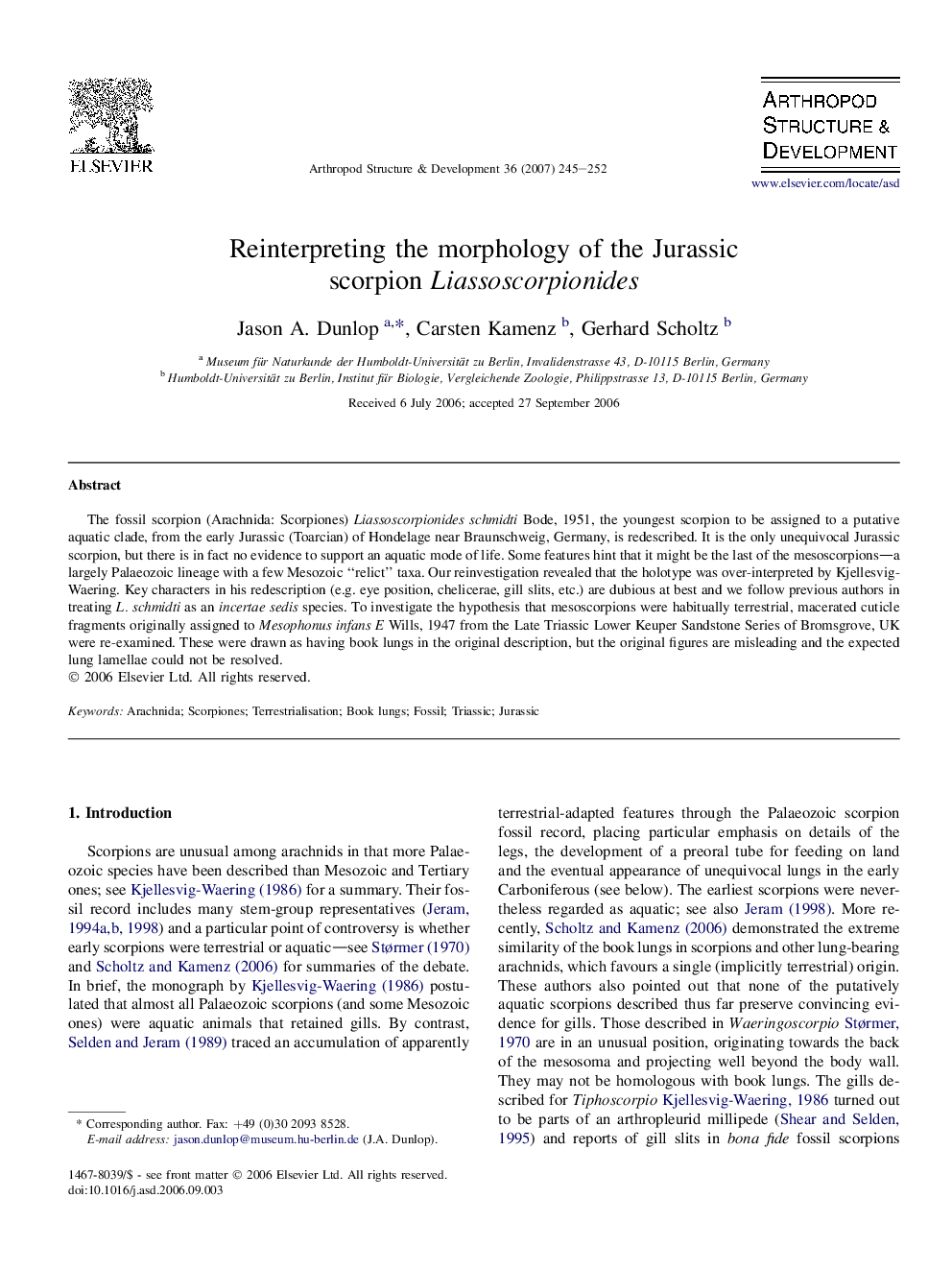| Article ID | Journal | Published Year | Pages | File Type |
|---|---|---|---|---|
| 2778999 | Arthropod Structure & Development | 2007 | 8 Pages |
The fossil scorpion (Arachnida: Scorpiones) Liassoscorpionides schmidti Bode, 1951, the youngest scorpion to be assigned to a putative aquatic clade, from the early Jurassic (Toarcian) of Hondelage near Braunschweig, Germany, is redescribed. It is the only unequivocal Jurassic scorpion, but there is in fact no evidence to support an aquatic mode of life. Some features hint that it might be the last of the mesoscorpions—a largely Palaeozoic lineage with a few Mesozoic “relict” taxa. Our reinvestigation revealed that the holotype was over-interpreted by Kjellesvig-Waering. Key characters in his redescription (e.g. eye position, chelicerae, gill slits, etc.) are dubious at best and we follow previous authors in treating L. schmidti as an incertae sedis species. To investigate the hypothesis that mesoscorpions were habitually terrestrial, macerated cuticle fragments originally assigned to Mesophonus infans E Wills, 1947 from the Late Triassic Lower Keuper Sandstone Series of Bromsgrove, UK were re-examined. These were drawn as having book lungs in the original description, but the original figures are misleading and the expected lung lamellae could not be resolved.
